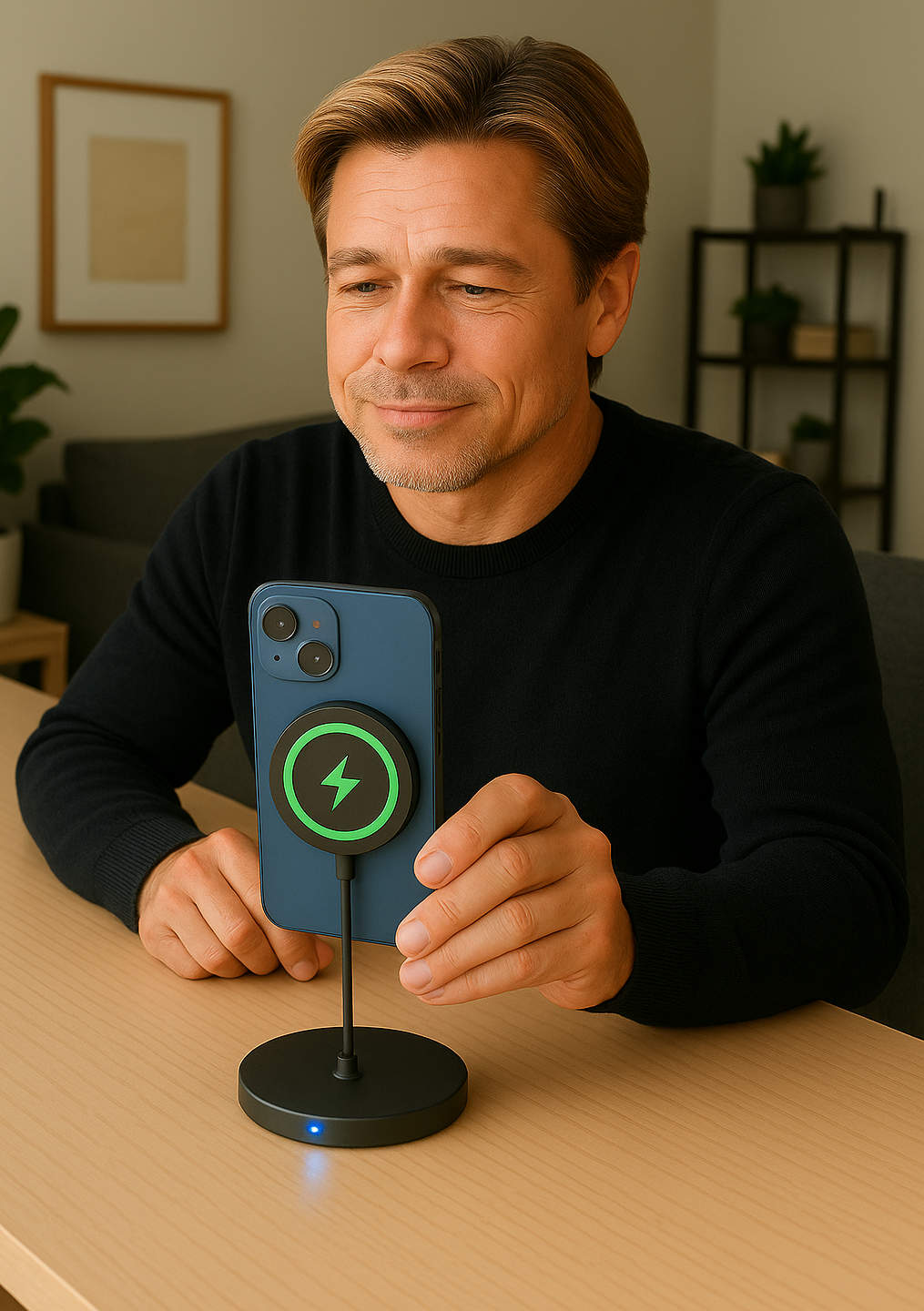Brushless DC (BLDC) motors dominate modern motion systems for their superior efficiency, compact size, and long service life. Yet behind every high-performance motor lies a critical challenge — achieving reliable electronic commutation and stable control across variable loads.
Unlike brushed motors, BLDCs rely on electronics — not mechanics — to control power and timing. That real-time complexity often turns into long development cycles and higher costs.
To overcome these challenges, many engineers now turn to Universal Motor Controllers (UMCs) — pre-validated control solutions that simplify design, reduce development risk, and accelerate time to market.
In this piece, we look at five real-world challenges in BLDC motor control — and how engineers are overcoming them using universal controllers in applications from EVs to HVAC systems.

Challenge 1 — The Maze of Rotor Position Detection
At the heart of the way a BLDC motor works is the switching of phases to the stator windings at just the right instance that the rotor magnets are aligned to produce maximum torque. This means that the rotor angular position has to be known at all times.
The Technical Challenge
The designer now faces the immediate selection of one of two complicated sensing techniques:
Sensor-Based Control (Hall Sensors/Encoders)
This offers dependable startup and low-speed performance but adds wiring complexity, cost, and potential failure points in harsh environments.
Sensorless Control (Back-EMF)
This approach has usability advantages due to no physical sensors needed, and therefore is cost and size-effective. The catch is that the controller must still estimate the rotor position based on the back-electromotive force (B-EMF) produced by the motor.

At low speeds, back-EMF is too weak to detect, making it hard to start the motor smoothly or keep it stable without sensors. Creating observer-based control algorithms from scratch can take significant time and expertise.
The Solution — Universal Controller
By using a universal controller platform, engineers can bypass this challenge entirely through built-in hybrid control modes that manage both sensor-based and sensorless startup automatically. These controllers integrate compact hardware and firmware capable of switching seamlessly between sensing methods:
- Use Hall sensors for high torque startup and change to a high-tech B-EMF algorithm once at speed.
- Use high-resolution encoders for very precise applications (e.g., robotics).
- Include an open-loop alignment and ramp sequence for fully sensorless startup, which then transitions smoothly to closed-loop back-EMF control.
This validated versatility can shorten development cycles significantly. For instance, in one HVAC compressor project, engineers reported that switching to a universal controller cut prototype tuning time by nearly 70%, while maintaining stable torque at low speed. The same architecture has been successfully applied to industrial pumps, HVAC compressors, and robotic actuators — systems that demand reliable torque output under fluctuating loads.
Anyone who has tried to tune a sensorless BLDC at low speed knows the pain — a universal controller’s hybrid approach can skip that entire tuning rabbit hole.
Challenge 2 — Torque Ripple and Acoustic Noise in BLDC Motor Control
Any periodic fluctuation in drive torque is known as torque ripple, which leads to vibration, mechanical stress, reduced precision, and, most notably, unwanted acoustic noise.
The Technical Challenge
Torque ripple predominantly originates from the control algorithm:
Trapezoidal (Six-Step) Commutation
This method is much simpler to implement and controls the power applied to the motor in 60-degree steps. The discrete step-increment of current causes sudden changes in the magnetic field.
This results in high torque ripple and noise that can hardly be avoided. It is low-cost but not very good for applications that need high precision noise (i.e., HVAC fans, medical devices).
Sinusoidal Commutation/Field-Oriented Control (FOC)
FOC uses advanced vector math to modulate the three-phase currents into continuous sine waves while maintaining the magnetic field. The result is nearly ripple-free torque — but it demands fast processors, precise current sensing, and math-heavy tuning.
The Universal Controller Solution
Universal controllers come with built-in FOC algorithms and fast MCUs that handle complex current control at high speed. This gives the motor a smooth, quiet response and removes the noise and vibration that usually take months of tuning to fix — a big advantage in HVAC and medical equipment.
In practice, switching to pre-tuned FOC control eliminates months of algorithm tweaking that usually go into chasing acoustic perfection.
When selecting a BLDC motor controller, the choice between trapezoidal and FOC control should be guided by application priorities. Cost-sensitive systems such as HVAC fans or pumps can operate efficiently with trapezoidal control, while robotics, drones, and precision medical devices benefit from the superior smoothness of FOC. Balancing these factors early in design helps align performance expectations with project budgets.
Challenge 3 — Thermal Management and System Efficiency
The main reason to choose a BLDC motor is the efficiency. However, the efficiency advantage can be negated with a poorly designed controller that creates excess heat conditions, which lead to failure of the entire system.
The Technical Challenge
Inefficiency and heat are created for one of two reasons in the controller:
Power Stage Switching Losses
Every time the MOSFETs (the power switches) are turned on or off, energy is wasted as heat. Higher switching frequencies (desired to achieve ultra-smooth FOC control) and higher operating voltages/currents exacerbate losses.
Conduction Losses
Heat is created from the resistance in the MOSFETs and the resistance in the PCB traces themselves.
Designers must balance several thermal design factors — from selecting low-resistance MOSFETs or GaN/SiC switches to optimizing heat sinks and implementing temperature monitoring with throttling. In EV drive systems, effective thermal control is not just about efficiency but about safeguarding the entire drivetrain over time.
The One Universal Controller Fix
Premium universal controllers are designed to tackle this challenge through hardware optimization solutions:
- They utilize smart gate drivers that switch the MOSFETs extremely fast, reducing the losses in the power stage.
- Controllers have multi-layer PCBs that have wide copper planes and thermal vias serving as integrated heat spreading devices pulling heat away from important components.
- The firmware integrates effective thermal protection that automatically reduces the motor current or restricts the speed to prevent a critical temperature from being exceeded, protecting both the controller and motor from over-temperature conditions through automatic thermal derating, ensuring reliable continuous operation. Universal controllers with built-in thermal throttling and efficient heat dissipation maintain consistent performance and extend both motor and battery life.

In practical terms, thermal performance should be a key selection criterion. Matching current rating to voltage class ensures both efficiency and long-term reliability. And in many cases, the resulting price differences simply reflect hardware and design choices — such as better power-stage materials, higher heat-dissipation capacity, or faster processors — rather than brand variation. For instance, 24–36V BLDC motor controllers are typically optimized for light e-mobility and robotics, while 48–96V models suit industrial pumps and automation drives requiring higher continuous torque.
Challenge 4 — The Paradox of the Variety of Motors and Loads
A given company may have dozens of different BLDC motors from different manufacturers on which they produce their products, and they vary with respect to slightly different electrical parameters (inductance, resistance, back-EMF constant).
The Technical Problem
In a conventional design, simple tuning of the control code and parts of the hardware (current sensing resistors, for example, need precise matching) becomes essential for every different motor. A motor controller for a small 48V fan motor will not work well, if it even works at all, on a larger 96V pump motor. This compels organizations to keep track of an extensive, expensive, and difficult-to-manage library of hardware designs and firmware versions.
The Universal Controller Fix
The distinguishing characteristic of a universal controller is its auto-tuning and parameterization capability. These systems are equipped with software routines that perform tests on the attached motor to determine its electrical parameters when first executed.
Following this, the control software will adjust the internal control loops (PID gains, current limits, commutation timing) to suit perfectly for the motor that was detected.
This feature:
- Provides a single hardware controller (e.g., a Universal Brushless Motor Controller that covers a wide input voltage) to drive many different motors.
- Removes the need to manually calibrate at the factory location or flash different firmware versions for every possible product line.
In manufacturing environments, this flexibility is a major time saver. Appliance manufacturers, for example, can use the same universal controller — covering 24V, 36V, 48V, and up to 96V — to operate ventilation fans, washing machine pumps, or air compressor motors without redesigning hardware or firmware for each product. For teams managing multiple product lines, the lesson is clear: hardware standardization saves both time and firmware sanity while maintaining consistent performance across platforms.
In practical engineering, cost efficiency doesn’t always mean compromising performance. Universal controllers reduce per-unit cost by replacing multiple dedicated models, while maintaining precision through FOC and adaptive sensing. This balance between scalability and performance is what enables universal controllers to support diverse applications without sacrificing efficiency or control precision.
Challenge 5 — System Integration and Time-to-Market
Today, the focus is not on making the motor spin, but to make it a mode of communication, protect itself, and become integrated into a larger machine, in a very short amount of time.
The Technical Challenge
In addition to essential commutation, the controller design must consider:
- Reliable Protection — Overcurrent, overvoltage, undervoltage, stall protection, and short-circuit action should be provided on both the hardware (fast comparators) and software sides.
- Communication — Interfaces to a master processor or outside equipment using standard communication protocols (CAN, RS-485, I2C, etc.).
- Safety Certainty — Meeting strict safety standards (viz IEC, ISO) typically requires full documentation as well as fault-tolerant design.

Creating a controller with these elements built in usually adds an additional few months to the development process.
The Universal Controller Solution
The universal controller is an inclusive, integrated motor control platform. This inherent integration reduces the engineering problem of creating a controller to a mere configuration problem. With ready-made technology and broad application support offered by these advanced systems, businesses can dramatically speed up product delivery by going straight from selecting a motor to testing the application.
This plug-and-play advantage is especially valuable in industrial automation and robotics. Engineers can quickly integrate universal controllers via CAN or RS-485 networks, enabling a new robotic arm or conveyor module to go from prototype to production within days instead of months.
Conclusion
When selecting a universal controller for BLDC motor control, engineers often need to balance voltage compatibility, control precision, and cost efficiency. The key is choosing a platform that scales across power levels without multiplying your hardware SKUs — enabling both engineering flexibility and procurement efficiency.
For an overview of a few solid, off-the-shelf solutions that address these complex engineering problems, you can look to manufacturers of specialized industrial and advanced motor control apparatus, such as Brushless.com.

